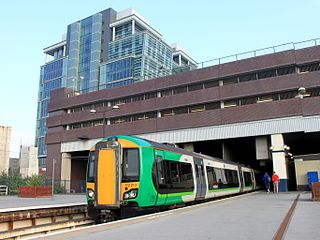
Birmingham Snow Hill, also known as Snow Hill station, is a railway station in Birmingham City Centre. It is one of the three main city-centre stations in Birmingham, along with Birmingham New Street and Birmingham Moor Street.

The Gloucestershire Warwickshire Steam Railway is a volunteer-run heritage railway which runs along the Gloucestershire/Worcestershire border of the Cotswolds, England.

Tyseley Locomotive Works, formerly the Birmingham Railway Museum, is the engineering arm of steam railtour promoter Vintage Trains based in Birmingham, England. It occupies part of the former Great Western Railway's Tyseley depot, built in 1908 to accommodate expanding operations in the West Midlands, particularly the opening of the North Warwickshire Line as a new main line from Birmingham to Bristol.

Birmingham Moor Street, also known as Moor Street station, is one of three main railway stations in the city centre of Birmingham, England, along with Birmingham New Street and Birmingham Snow Hill.

Wilmcote railway station serves the village of Wilmcote, about 4 miles (6.4 km) north of Stratford-upon-Avon in Warwickshire, England. The station is run by West Midlands Trains. It is served by both West Midlands Railway and Chiltern Railways trains.

Stratford-upon-Avon railway station is the southern terminus of the North Warwickshire Line and Leamington–Stratford line, serving the market town of Stratford-upon-Avon in Warwickshire, England. The station is served by West Midlands Trains (WMT) and Chiltern Railways.
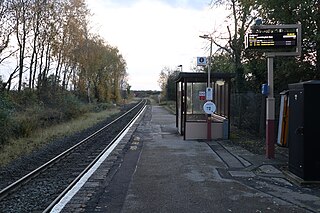
Bearley railway station serves the village of Bearley in South Warwickshire, England. It is on the Leamington–Stratford line. Today it is an unstaffed rural halt, managed by West Midlands Railway.
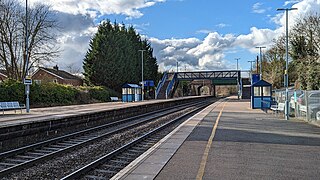
Hatton railway station takes the name of the village of Hatton in Warwickshire, England, although it is about 1 mile (1.6 km) from the village. It is situated in the linear settlement of the same name, that evolved around the station, mainly in the 1950s and 1960s. Other close settlements are Little Shrewley and Shrewley. The station is managed by Chiltern Railways.
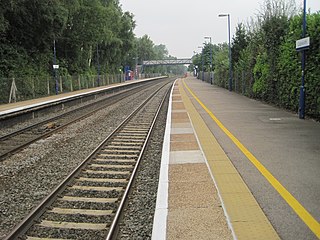
Lapworth railway station serves the village of Kingswood, Warwickshire, near the village of Lapworth from which it takes its name.
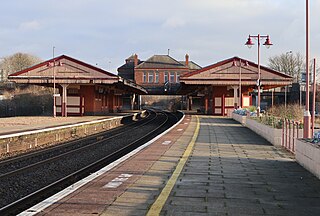
Tyseley railway station serves the district of Tyseley in Birmingham, West Midlands, England. It is at the junction of the lines linking Birmingham with Leamington Spa and Stratford-upon-Avon.

Yardley Wood railway station serves the Yardley Wood area of Birmingham in the West Midlands of England. Located on the North Warwickshire Line, the station, and all trains serving it, are operated by West Midlands Trains.

Henley-in-Arden is a railway station serving the town of Henley-in-Arden, Warwickshire, England. It is on the North Warwickshire Line between Birmingham and Stratford-upon-Avon.

Wootton Wawen railway station serves the village of Wootton Wawen in Warwickshire, England. It is served by trains between Kidderminster and Stratford-upon-Avon via Birmingham.
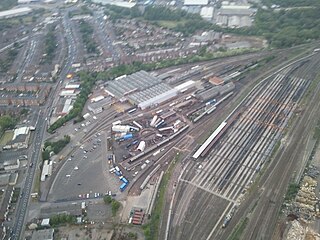
Tyseley TMD is a railway traction maintenance depot situated in Tyseley, Birmingham, England.
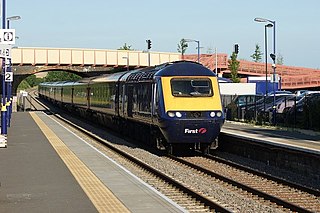
Honeybourne railway station serves the village of Honeybourne in Worcestershire, England. Opened in 1853, it is on the Cotswold Line and was formerly a busy junction with five platform faces, also serving trains on the Great Western Railway's Honeybourne Line between Cheltenham Spa and Stratford-upon-Avon, which formed part of a strategic route between the West Midlands and the West of England.

The Snow Hill Lines is the collective name for the railway lines running through Birmingham Snow Hill, and Birmingham Moor Street stations in Birmingham, United Kingdom. They form an important part of the suburban rail network of Birmingham, Warwickshire and Worcestershire. All other lines to/through Birmingham use Birmingham New Street station. The Snow Hill lines carry around 20% of the daily rail services into Birmingham; the remainder use New Street.
Stratford-upon-Avon Racecourse Platform was a railway station on the Stratford upon Avon to Cheltenham section of the Honeybourne Line. Located one mile south of the town centre, its purpose was to serve Stratford Racecourse. It closed in 1968 as a result of falling passenger numbers.
The Alcester–Bearley branch line was a 6+3⁄4-mile single-track branch railway line in Warwickshire, England. It was built by the Alcester Railway Company. It connected the manufacturing town of Alcester into the Great Western Railway network, opening in 1876.
The Birmingham and Oxford Junction Railway was an English railway line promoted by the Great Western Railway to gain a route from its southern base towards the industrial centres of the West Midlands, and in due course the north-west. It overtook another GWR subsidiary, the unbuilt Oxford and Rugby Railway, and the Birmingham Extension Railway which was to build a new independent station in the city. It was authorised in 1846 and formed a single project to connect Birmingham and Oxford.
The Stratford on Avon Railway was a branch railway line opened in 1860, to connect the town of Stratford-upon-Avon to the Great Western Railway main line at Hatton, in England. It was worked by the GWR. In 1861 it was connected through Stratford to a branch line from Honeybourne, and this later enabled the development of a through mineral traffic. The company was absorbed by the GWR in 1883.



















